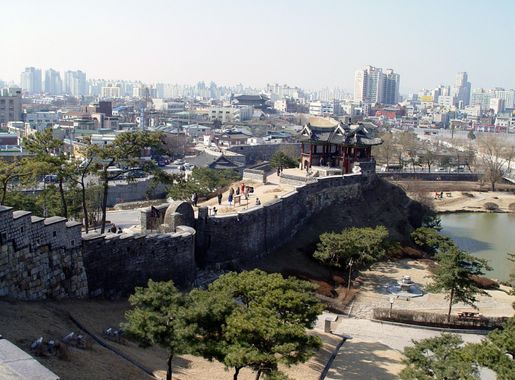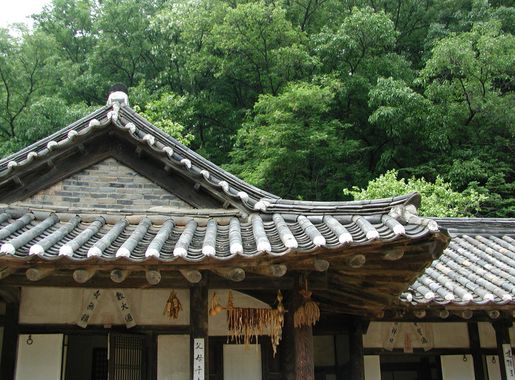
Exploring the Charm of Jangan-gu, Suwon
Discover the blend of history and modernity in Jangan-gu, Suwon, where ancient fortresses, vibrant markets, and serene parks create an unforgettable travel experience.
Jangan-gu, located in the vibrant city of Suwon, South Korea, is a captivating blend of historical richness and modern dynamism. This district is famous for its close proximity to the UNESCO World Heritage site, Suwon Hwaseong Fortress. Built in the late 18th century, the fortress offers a panoramic view of the city and a glimpse into Korea’s storied past. Visitors can stroll along its well-preserved walls, visit the striking Hwaseong Haenggung Palace, and learn about the region’s heritage at the Hwaseong Museum. Beyond its historical allure, Jangan-gu is also a hub of contemporary culture. The district's lively streets are lined with an array of shops, cafes, and restaurants that offer a taste of both traditional and modern Korean cuisine. The local markets are a treasure trove of unique handicrafts, fresh produce, and delectable street food. The bustling Paldalmun Gate area is a particular highlight, known for its vibrant street life and eclectic mix of old and new. For those seeking a blend of nature and leisure, Jangan-gu does not disappoint. The picturesque Manseok Park, with its serene lake and well-maintained walking trails, provides a perfect escape from the urban hustle. The park is a favorite spot among locals for picnics, jogging, and seasonal festivals. Whether you're a history buff, a food enthusiast, or simply looking to soak in the local culture, Jangan-gu offers a diverse and enriching experience for every traveler.
Local tips in Jangan-gu
- Visit early in the morning to explore Hwaseong Fortress without the crowds.
- Try local delicacies at Paldalmun Gate, especially the famous Korean fried chicken.
- Wear comfortable shoes for walking along the fortress walls and exploring the markets.
- Check out the seasonal festivals at Manseok Park for a unique cultural experience.
- Use public transportation for easy access to major attractions around Jangan-gu.
Exploring the Charm of Jangan-gu, Suwon
Jangan-gu, located in the vibrant city of Suwon, South Korea, is a captivating blend of historical richness and modern dynamism. This district is famous for its close proximity to the UNESCO World Heritage site, Suwon Hwaseong Fortress. Built in the late 18th century, the fortress offers a panoramic view of the city and a glimpse into Korea’s storied past. Visitors can stroll along its well-preserved walls, visit the striking Hwaseong Haenggung Palace, and learn about the region’s heritage at the Hwaseong Museum. Beyond its historical allure, Jangan-gu is also a hub of contemporary culture. The district's lively streets are lined with an array of shops, cafes, and restaurants that offer a taste of both traditional and modern Korean cuisine. The local markets are a treasure trove of unique handicrafts, fresh produce, and delectable street food. The bustling Paldalmun Gate area is a particular highlight, known for its vibrant street life and eclectic mix of old and new. For those seeking a blend of nature and leisure, Jangan-gu does not disappoint. The picturesque Manseok Park, with its serene lake and well-maintained walking trails, provides a perfect escape from the urban hustle. The park is a favorite spot among locals for picnics, jogging, and seasonal festivals. Whether you're a history buff, a food enthusiast, or simply looking to soak in the local culture, Jangan-gu offers a diverse and enriching experience for every traveler.
Iconic landmarks you can’t miss
Hwaseong Haenggung
Discover Hwaseong Haenggung, a captivating historical landmark in Suwon showcasing the architectural beauty of the Joseon Dynasty and rich cultural heritage.
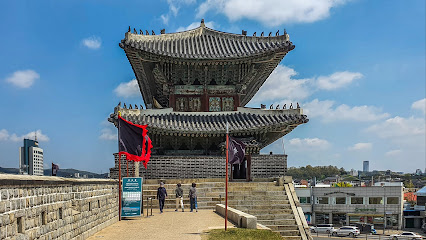
Hwaseong Fortress, Suwon
Discover the grandeur of Hwaseong Fortress, a UNESCO World Heritage site, offering breathtaking views and a deep dive into Korea's rich history.

Banghwasuryujeong Pavilion (Dongbukgangnu)
Discover the historical beauty of Banghwasuryujeong Pavilion in Suwon, a UNESCO World Heritage site that offers stunning views and rich Korean culture.
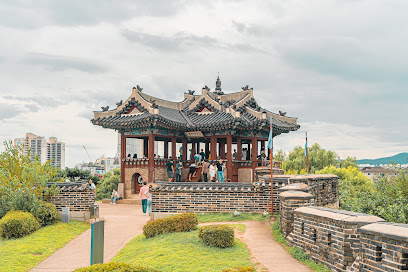
Yeonmudae (Dongjangdae/Eastern Command Post)
Explore Yeonmudae, a historic military site in Suwon, for stunning views and a deep dive into Korea's rich past.
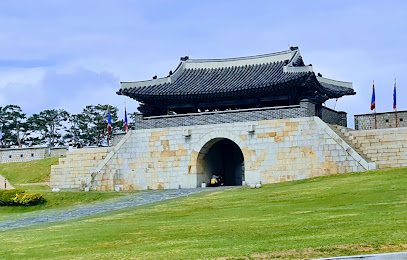
Janganmun Gate
Discover the stunning architectural beauty and historical significance of Janganmun Gate, a key landmark in Suwon's rich cultural heritage.

Hwahongmun Gate (Buksumun)
Discover the rich history and stunning architecture of Hwahongmun Gate, a UNESCO World Heritage site nestled within the enchanting Hwaseong Fortress in Suwon.
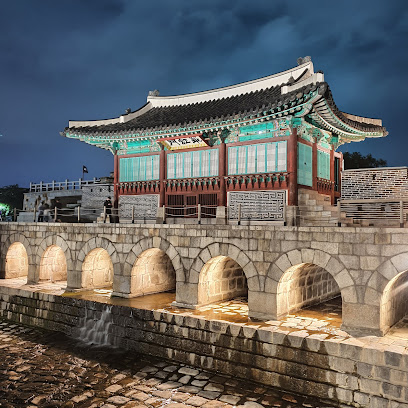
Mr. Toilet House
Explore the world's quirkiest museum at Mr. Toilet House in Suwon, South Korea, celebrating the cultural significance of sanitation and hygiene.
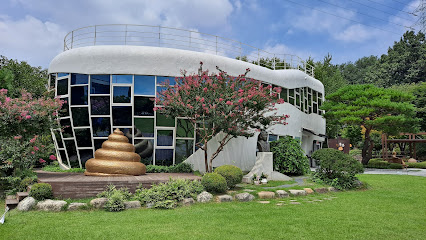
Haengnidan-gil
Explore Haengnidan-gil in Suwon-si, a vibrant street filled with cafes, boutiques, and rich cultural experiences, perfect for all tourists.
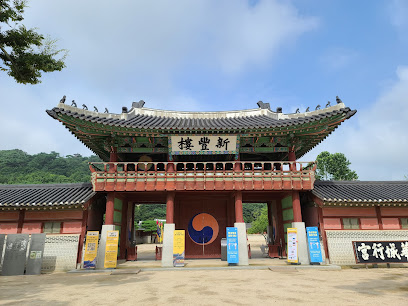
Seobukgangnu (Northwestern Pavilion)
Discover the serene beauty and rich cultural heritage at Seobukgangnu, a stunning pavilion in Suwon, Gyeonggi-do, South Korea.
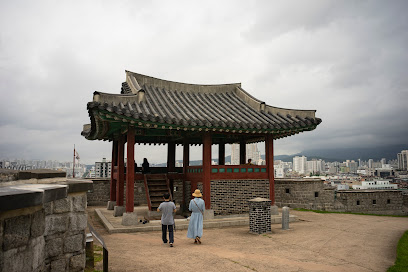
Haenggung-dong Mural Village
Experience the artistic allure of Haenggung-dong Mural Village, a vibrant neighborhood in Suwon-si filled with captivating murals and local culture.
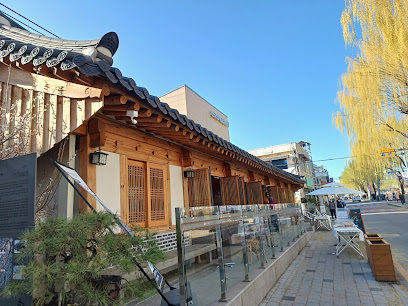
Unmissable attractions to see
Hwaseong Haenggung
Explore the historical wonders of Hwaseong Haenggung, a stunning royal palace showcasing the architectural brilliance of the Joseon Dynasty in Suwon, South Korea.
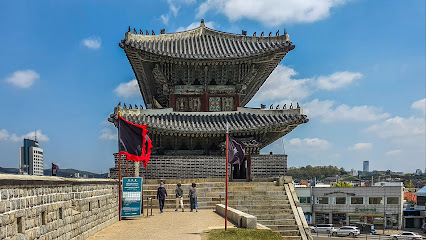
Hwaseong Fortress, Suwon
Discover the historical wonders of Hwaseong Fortress, a UNESCO World Heritage Site, where ancient architecture meets breathtaking views in Suwon, South Korea.
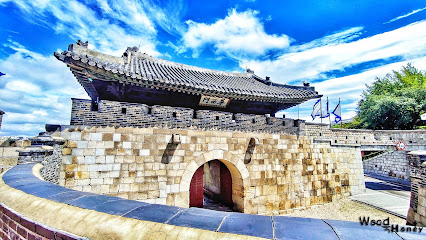
Paldalmun Gate
Explore the architectural beauty and historical significance of Paldalmun Gate, a cultural landmark in Suwon, Gyeonggi-do, Korea.
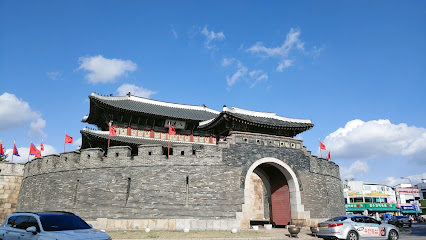
Janganmun Gate
Explore the historic Janganmun Gate - a stunning architectural gem and a gateway to Suwon's rich heritage.
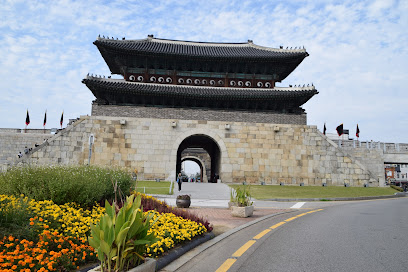
Hwahongmun Gate (Buksumun)
Discover the stunning Hwahongmun Gate in Suwon, a historical landmark that offers a glimpse into Korea's rich heritage and breathtaking views.
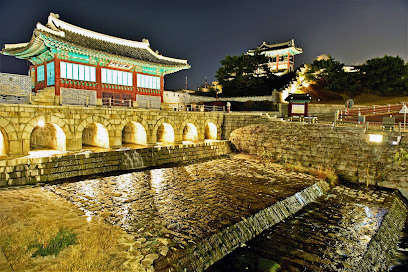
Suwon Hwaseong Museum
Explore the Suwon Hwaseong Museum, a treasure trove of history and culture showcasing the majestic Hwaseong Fortress in South Korea.

Mr. Toilet House
Discover the humorous side of hygiene at Mr. Toilet House, a quirky museum in Suwon-si dedicated to the history of toilets and sanitation.
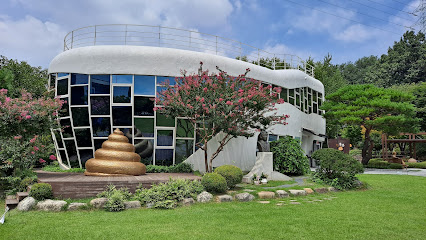
Suwon Museum
Explore the captivating history and culture of Suwon at the Suwon Museum, where art and heritage come to life in every exhibition.
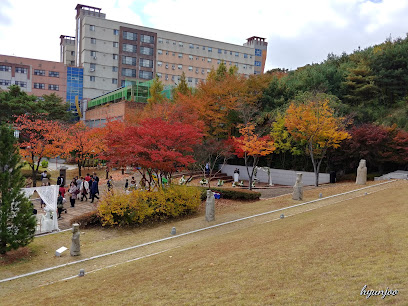
Jidong Mural Village
Explore Jidong Mural Village, a vibrant artistic haven in Suwon-si, filled with colorful murals and engaging local culture, perfect for photography and inspiration.
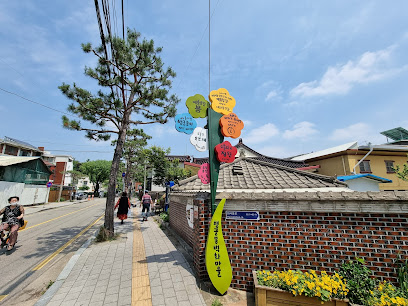
Haenggung Street 행궁길
Experience the vibrant fusion of history and modernity at Haenggung Street, a cultural gem in Suwon-si, Gyeonggi-do, rich in tradition and local flavors.
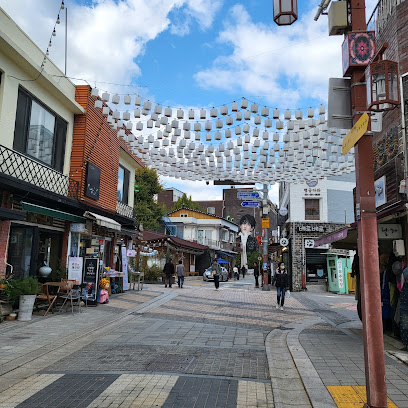
Essential places to dine
Suwon Mandu
Discover authentic Chinese flavors at Suwon Mandu in Paldal-gu - famous for its delicious dumplings and warm hospitality.
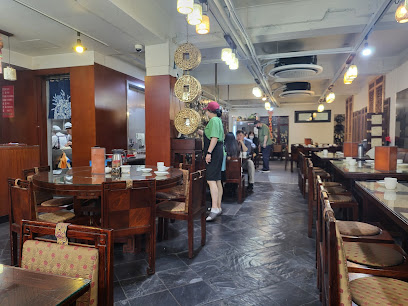
Yeonpo Galbi
Discover authentic Korean barbecue at Yeonpo Galbi in Suwon-si, where premium beef meets traditional dining.
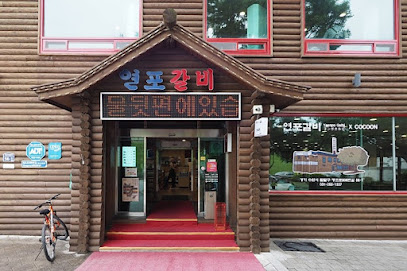
Shangrila Restautant
Discover authentic Nepalese flavors at Shangrila Restaurant in Suwon-si—where every dish tells a story.
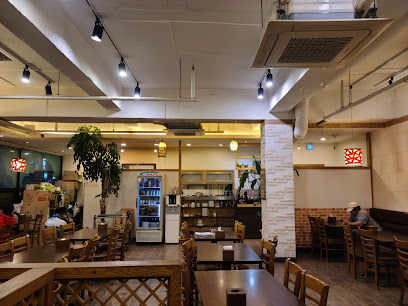
Great Himalaya Restaurant
Experience authentic Indian cuisine at Great Himalaya Restaurant in Suwon-si - a culinary gem blending tradition with flavor.

Farm to Hanok
Discover the perfect blend of traditional Korean culture and modern brunch delights at Farm to Hanok in Suwon.
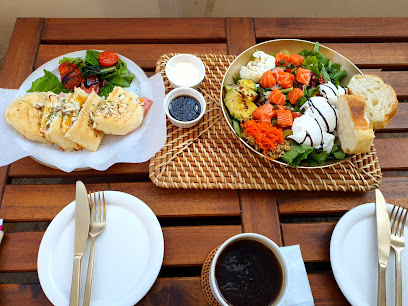
Kasam Indian resturant
Experience authentic Indian and Nepalese cuisine at Kasam Indian Restaurant in Suwon-si - A must-visit for food lovers!

On the Border Suwon AK
Experience family-friendly dining at On the Border Suwon AK with diverse flavors and a welcoming atmosphere in Gyeonggi-do.
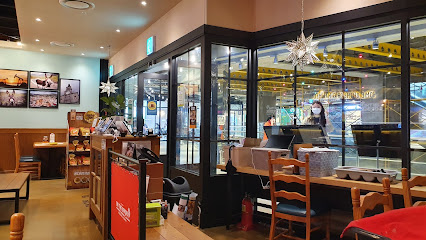
Restaurant, Korean
Experience authentic Korean cuisine in Suwon-si with delicious dishes served in a cozy atmosphere at affordable prices.

신나는 대게파티
Indulge in the freshest crab dishes at 신나는 대게파티 in Suwon - a seafood lover's paradise!
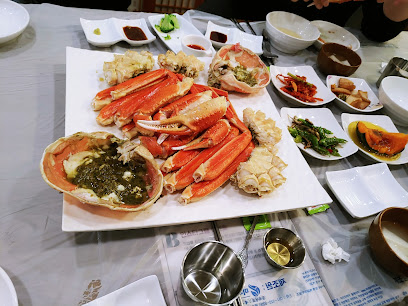
Restaurant
Discover authentic Korean cuisine in Suwon's vibrant dining scene, where flavors meet tradition and hospitality.

Markets, malls and hidden boutiques
Starfield Suwon
Experience the ultimate shopping and entertainment destination at Starfield Suwon, where fashion meets fun in Gyeonggi-do.
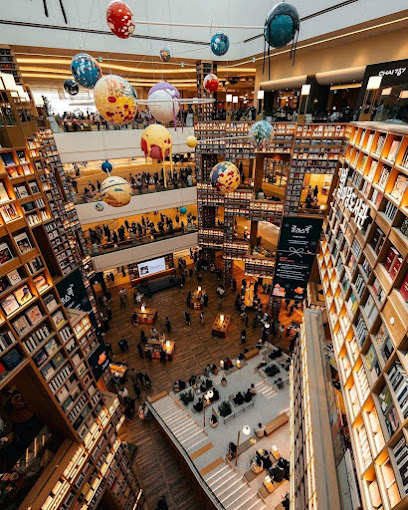
Suwon Station Underground Shopping Center
Explore the Suwon Station Underground Shopping Center for an unforgettable mix of shopping, dining, and local culture in the heart of Suwon.
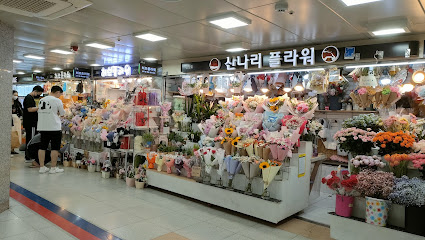
Beautiful Store, Suwon Fortress points
Explore the eclectic charm of Suwon's Beautiful Store, a second-hand treasure trove near the historic Suwon Fortress.
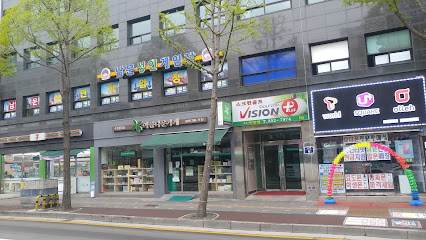
Flying Tiger Copenhagen Gwanggyo Galleria
Explore the whimsical charm of Flying Tiger Copenhagen in Gwanggyo – a treasure trove of quirky gifts and creative finds for all ages.
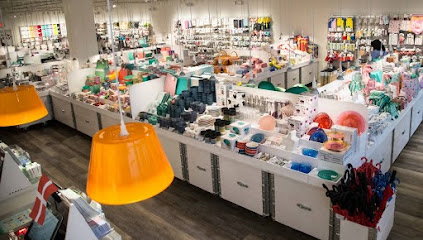
상인BATH&선물
Explore 상인BATH&선물, a charming gift shop in Suwon-si, offering unique local crafts and bath products perfect for souvenirs.

예가에스피
Explore 예가에스피 in Suwon-si for unique handcrafted gifts that capture the essence of Korean culture and artistry.

한국지엠상사
Explore 한국지엠상사 in Suwon for unique gifts and a glimpse into South Korean culture, perfect for tourists seeking authentic souvenirs.

Flying Tiger Copenhagen
Explore Flying Tiger Copenhagen for fun and quirky gifts, home goods, and unique souvenirs in Suwon-si, perfect for every occasion!
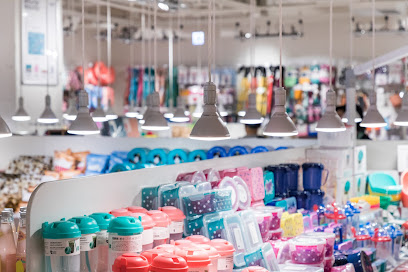
설탕구제샵
Discover fashion and culture at 설탕구제샵, Suwon-si's hidden gem for stylish clothing and local flair.
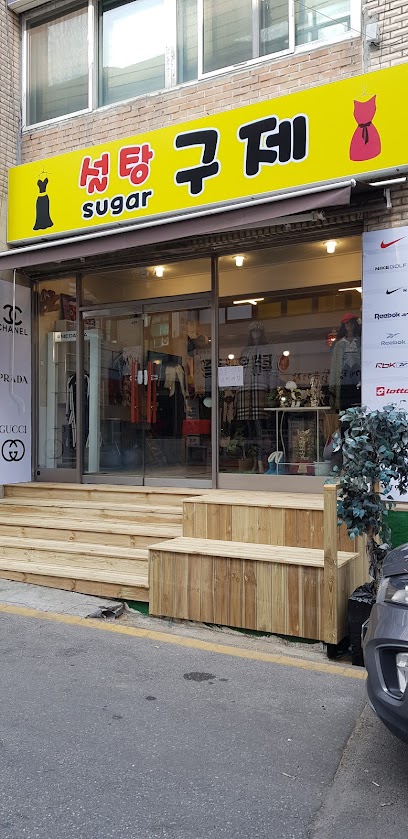
MoodMolly
Explore the charm of MoodMolly in Suwon, where exquisite handcrafted jewelry meets exceptional service in a beautiful setting.

Essential bars & hidden hideouts
it bar
Experience Suwon's vibrant nightlife at It Bar, where exquisite drinks meet a warm, inviting atmosphere, perfect for unwinding with friends.
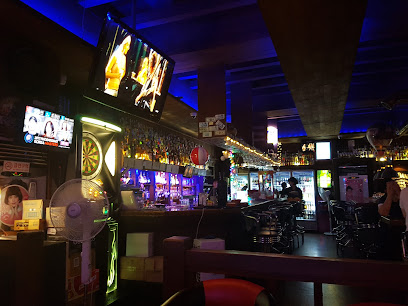
Lanipeob
Discover the vibrant atmosphere of Lanipeob, a trendy bar in Suwon-si, perfect for unwinding with friends and enjoying local nightlife.
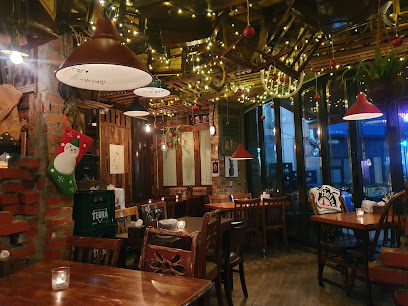
Bar
Discover Suwon's vibrant nightlife at this premier bar, offering a diverse drink selection, live music, and an inviting atmosphere for all visitors.
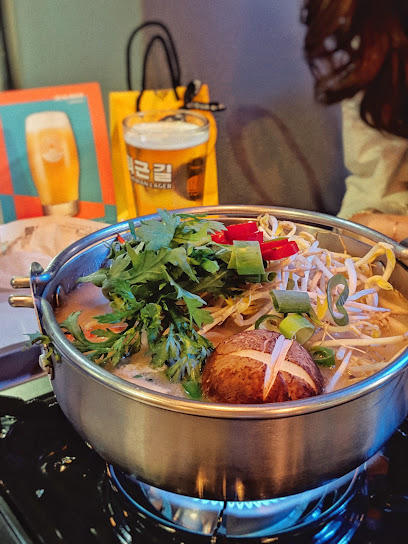
주락 (Jurock)
Experience the vibrant nightlife of Suwon-si at 주락 (Jurock), a lively bar perfect for unwinding and socializing after a day of exploration.
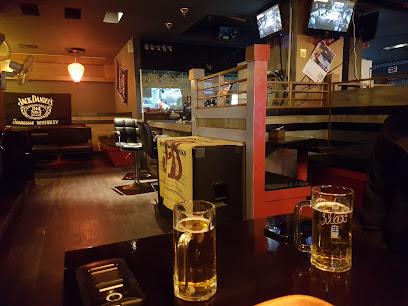
하와이지
Join the vibrant nightlife at 하와이지 in Suwon, where great drinks and friendly vibes create an unforgettable experience.
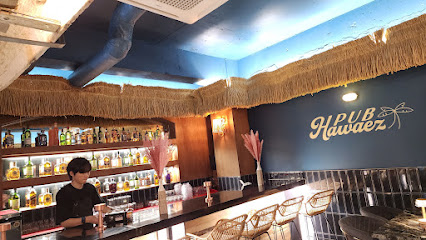
그라운드펍
Experience the vibrant nightlife of Suwon at 그라운드펍, where local brews and a cozy atmosphere await every traveler.
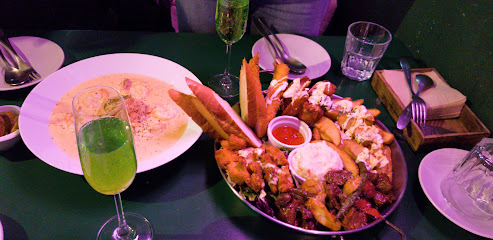
D.place
Experience the vibrant nightlife at D.place, a must-visit bar in Suwon-si, offering a unique ambiance and a diverse selection of drinks.
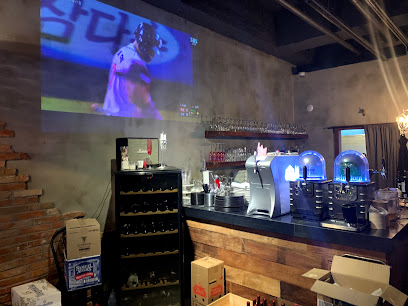
Mu
Experience the vibrant nightlife of Suwon at Mu, a lively bar offering a unique taste of Korean culture and local flavors.

Neocheupeob
Experience the vibrant nightlife of Suwon-si at Neocheupeob, a charming bar offering a unique selection of drinks and a cozy atmosphere.

Dirty Rabbit
Discover the vibrant nightlife at Dirty Rabbit, a trendy bar in Suwon-si, Gyeonggi-do, offering creative cocktails and a lively atmosphere.

Local Phrases
-
- Hello안녕하세요
[annyeonghaseyo] - Goodbye안녕히 가세요
[annyeonghi gaseyo] - Yes예
[ye] - No아니요
[aniyo] - Please/You're welcome부탁합니다 / 천만에요
[butakhamnida / cheonmaneyo] - Thank you감사합니다
[gamsahamnida] - Excuse me/Sorry죄송합니다
[joesonghamnida] - How are you?어떻게 지내세요?
[eotteoke jinaeseyo?] - Fine. And you?잘 지내요. 그리고 당신은요?
[jal jinaeyo. geurigo dangsineunyo?] - Do you speak English?영어 할 수 있어요?
[yeongeo hal su isseoyo?] - I don't understand이해하지 못해요
[ihaehaji mothaeyo]
- Hello안녕하세요
-
- I'd like to see the menu, please메뉴를 볼 수 있을까요?
[menyureul bol su isseulkkayo?] - I don't eat meat고기를 먹지 않아요
[gogireul meokji anayo] - Cheers!건배!
[geonbae!] - I would like to pay, please결제하고 싶어요
[gyeoljehago sipeoyo]
- I'd like to see the menu, please메뉴를 볼 수 있을까요?
-
- Help!도와주세요!
[dowajuseyo!] - Go away!가세요!
[gaseyo!] - Call the Police!경찰을 불러주세요!
[gyeongchareul bulleojuseyo!] - Call a doctor!의사를 불러주세요!
[uisareul bulleojuseyo!] - I'm lost길을 잃었어요
[gireul ilheosseoyo] - I'm ill아파요
[apayo]
- Help!도와주세요!
-
- I'd like to buy...사고 싶어요...
[sago sipeoyo...] - I'm just looking둘러보고 있어요
[dulleobogo isseoyo] - How much is it?얼마에요?
[eolmaeyo?] - That's too expensive너무 비싸요
[neomu bissayo] - Can you lower the price?가격을 깎아 줄 수 있어요?
[gageoreul kkakka jul su isseoyo?]
- I'd like to buy...사고 싶어요...
-
- What time is it?지금 몇 시에요?
[jigeum myeot sieyo?] - It's one o'clock한 시에요
[han sieyo] - Half past (10)10시 반
[sipshi ban] - Morning아침
[achim] - Afternoon오후
[ohu] - Evening저녁
[jeonyeok] - Yesterday어제
[eoje] - Today오늘
[oneul] - Tomorrow내일
[naeil] - 1하나
[hana] - 2둘
[dul] - 3셋
[set] - 4넷
[net] - 5다섯
[daseot] - 6여섯
[yeoseot] - 7일곱
[ilgop] - 8여덟
[yeodeol] - 9아홉
[ahop] - 10열
[yeol]
- What time is it?지금 몇 시에요?
-
- Where's a/the...?어디에 ... 이에요?
[eo die ... ieyo?] - What's the address?주소가 뭐에요?
[jusoga mwoeyo?] - Can you show me (on the map)?지도로 보여 줄 수 있어요?
[jido ro boyeo jul su isseoyo?] - When's the next (bus)?다음 (버스) 언제와요?
[daeum (beoseu) eonjewayo?] - A ticket (to ....)표 (....으로)
[pyo (....euro)]
- Where's a/the...?어디에 ... 이에요?
History of Jangan-gu
-
Jangan-gu, part of Suwon, is renowned for its historical significance as a fortress town established during the late 18th century. The area is closely associated with the construction of the Hwaseong Fortress, which was built under the orders of King Jeongjo of the Joseon Dynasty. This fortification served both military and administrative purposes, helping to protect the region from invasions and solidifying Suwon's status as the new capital of Gyeonggi Province.
-
Jangan-gu is home to numerous traditional Korean houses known as Hanok, showcasing the architectural style of the Joseon period. These structures reflect the unique cultural heritage of the area, with their wooden frames and tiled roofs. The preservation of these historical buildings contributes to the cultural landscape of Suwon and serves as a reminder of its rich past.
-
King Jeongjo, one of Korea's most revered monarchs, was born in the Jangan-gu neighborhood. His reign (1776-1800) was marked by significant reforms and cultural advancements. The king's birthplace is celebrated in the local culture, with various monuments and sites dedicated to his legacy, including the Jeongjo's Shrine, which attracts visitors interested in Korea's royal history.
-
During the early 20th century, Jangan-gu played a role in the Korean independence movement against Japanese colonial rule. The area became a gathering point for activists and intellectuals advocating for Korea's sovereignty. This historical context adds a layer of significance to the neighborhood as a site of resistance and cultural pride.
-
In recent decades, Jangan-gu has experienced rapid urbanization, transforming from a historical enclave into a modern residential and commercial area. This development has led to a blend of traditional and contemporary lifestyles, where the historical significance of the past coexists with the dynamic energy of present-day Suwon, making it a unique cultural landscape.
Jangan-gu Essentials
-
Jangan-gu is easily accessible from other neighborhoods in Suwon. The area can be reached via the Suwon Station, which is serviced by the Seoul Subway Line 1. From Suwon Station, you can take a local bus or a taxi to reach specific locations within Jangan-gu. The journey typically takes around 20-30 minutes, depending on traffic. For those traveling from Seoul, the KTX and regular trains to Suwon Station offer a quick and comfortable ride, taking approximately 30-45 minutes.
-
Jangan-gu boasts a well-connected public transportation system, including buses and subways. The local bus network is extensive, and routes frequently cover major attractions and residential areas. The Suwon Subway Line 1 also runs through Jangan-gu, providing easy access to other districts. For a more local experience, consider renting a bicycle, as there are bike lanes available and rental stations throughout the area. Walking is also a pleasant option, especially in the park areas.
-
Jangan-gu is generally a safe neighborhood for tourists. However, it is advisable to remain cautious, especially in less crowded areas at night. Petty crimes like pickpocketing can occur in crowded places, so it’s wise to keep your belongings secure. While there are no specific high-crime areas targeting tourists, staying aware of your surroundings is recommended, particularly in isolated spots.
-
In case of an emergency, dial 112 for police assistance and 119 for fire or medical emergencies. There are several hospitals and clinics in Jangan-gu, with signs in English for international visitors. It is advisable to have travel insurance that covers medical emergencies. For minor health issues, local pharmacies provide over-the-counter medications, and staff often speak basic English.
-
Fashion: Do dress appropriately, especially when visiting temples or traditional sites. Avoid overly casual or revealing clothing. Religion: Do show respect for local customs, such as bowing slightly when greeting, and do not take photos in sacred spaces without permission. Public Transport: Do offer your seat to the elderly, pregnant women, or those with disabilities. Don’t talk loudly or eat on public transport. Greetings: Do greet locals with a smile and a slight bow. Eating & Drinking: Do try local dishes and share meals with others. Don’t waste food, as it is considered disrespectful.
-
To experience Jangan-gu like a local, visit traditional markets such as the Jangan Market, where you can find fresh produce and local delicacies. Don't miss out on trying Suwon's famous galbi (grilled ribs) at a local restaurant. Engage with locals; many are eager to share stories and recommendations. For a unique perspective, consider taking part in community events or festivals if your visit coincides with them.
Trending Landmarks in Jangan-gu
Nearby Cities to Jangan-gu
-
Things To Do in Seoul
-
Things To Do in Incheon
-
Things To Do in Chuncheon
-
Things To Do in Daejeon
-
Things To Do in Jeonju
-
Things To Do in Andong
-
Things To Do in Daegu
-
Things To Do in Gwangju
-
Things To Do in Pohang
-
Things To Do in Gyeongju
-
Things To Do in Suncheon
-
Things To Do in Ulsan
-
Things To Do in Mokpo
-
Things To Do in Busan
-
Things To Do in Jeju City

